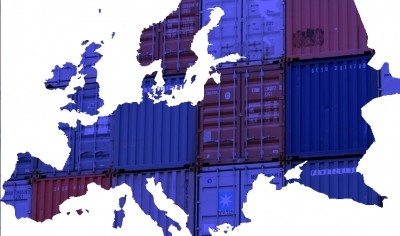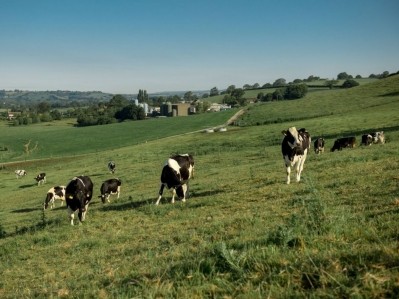Irish food and drink exports hit record high €16.7bn

Bord Bia’s Export Performance and Prospects report 2022/23 revealed Ireland’s food, drink and horticulture exports increased 22% last year, a record high. Food and drink exports were up €3bn since 2021 and almost 30% on pre-pandemic levels (€13bn in 2019).
Growth was largely attributed to both increasing unit prices, due to inflation and rising input and operational costs, and an increase in the volume of goods exported.
Irish dairy held the most value share, with exports valued at €6.8bn (£6bn) last year – a year-on-year increase of 33%, or €1.7bn (£1.5bn). This was mainly driven by butter (up 26% in value) and cheese (up 25% in value).
Dairy remained the largest element within Irish food and drink exports, with over 1.7 million tonnes of product shipped to over 130 markets worldwide.
Meat and livestock
Meat and livestock sector exports were the next highest in value, taking home more than €4bn for the Irish economy – representing an increase of 15% compared with the previous year.
Beef was the largest contributor to the sector, valued at €2.5bn (£2.22bn), an increase of €384m (£340m) or 18% on 2021 levels.
Prepared consumer food export values exceeded €3bn (£2.66bn), in a performance that was largely driven by the reopening of foodservice as Covid-19 restrictions lifted in early 2022 across key markets.
Irish drink exports reached almost €2bn (up 22% year-on-year) for the first time, an increase of 25% in value compared with pre-pandemic levels. North America continued to be the key export market, representing 52% of overall exports at just under €1bn (£886m).
Whiskey exports accounted for 60% of the overall value growth last year, with exports valued at almost €1bn (up 25% on 2021) for the first time.
Geopolitical impact
Commenting on the report’s findings, minister for Agriculture, Food and the Marine Charlie McConalogue said: “I’m proud to announce today’s excellent results, which were delivered amid a profoundly challenging year for the sector, most notably the impact of the war in Ukraine, inflationary pressures on producers and ongoing Covid-19 disruptions to the global supply chain.
“Against the backdrop of this difficult global trading environment, Ireland has continued to maintain its reputation as a world-class sustainable food producer and supplier, while also successfully securing new business in new markets around the world.
“I would like to congratulate the companies, farmers, fishers, and producers who have contributed to this performance, which would not have been possible without the strategic support that Bord Bia provides to the sector.”
The Export Performance and Prospects report 2022/23 is the first of its kind to be published by Bord Bia since Jim O’Toole became chief executive.
He added: “In my first Export Performance and Prospects Report as chief executive of Bord Bia, I’m delighted to welcome the highest ever value of exports by the Irish food, drink and horticulture sector.
‘Profound disruption’
“Following two years of profound disruption, 2022 brought a new range of cost and sourcing challenges, making this year’s export performance even more impressive. Today’s results are testament to the resilience of one of Ireland’s most important export industries.”
Despite the impressive results reported by Bord Bia, O’Toole warned that the industry needed to remain responsive to a range of upcoming challenges in 2023, with trading conditions set to endure and evolve.
“As 2023 is predicted to be another disruptive year of economic difficulty and challenging supply chains, Bord Bia will continue to be agile and responsive to client and sector needs in what is likely to be a period of ongoing volatility,” O’Toole added.
“For Irish food and drink exporters, it will be increasingly important to be aware of how consumers respond to the current cost of living crisis and to position their products accordingly.”















